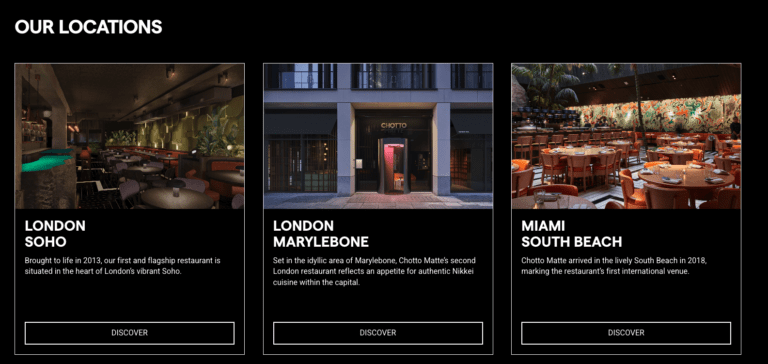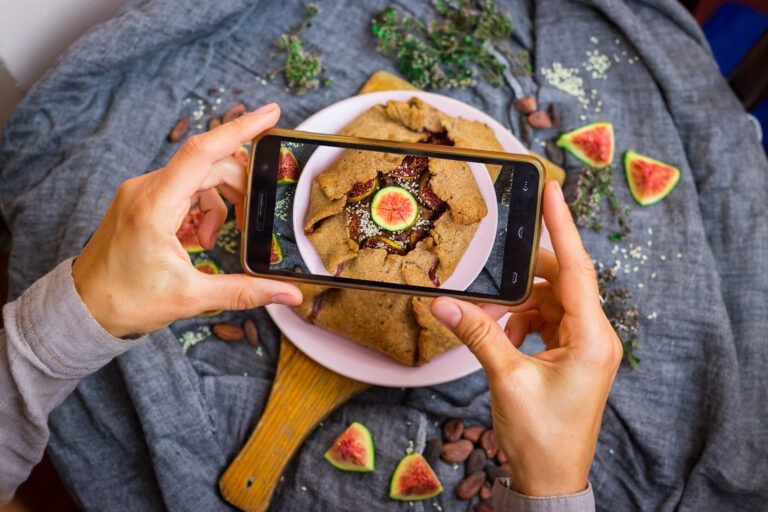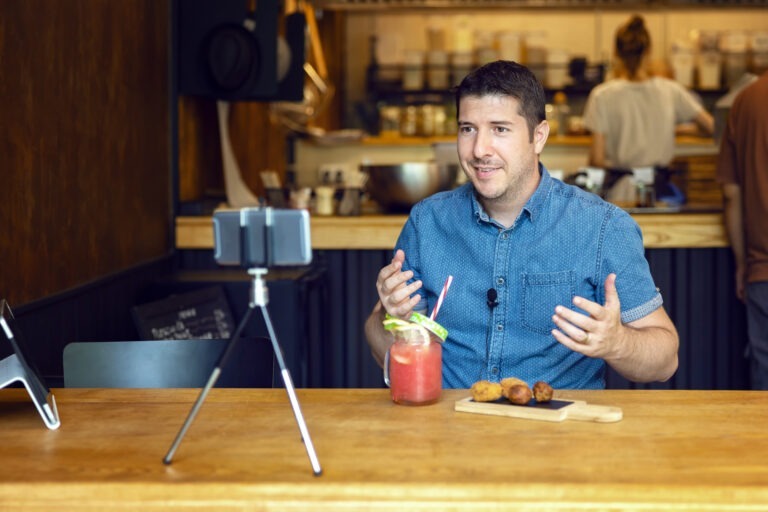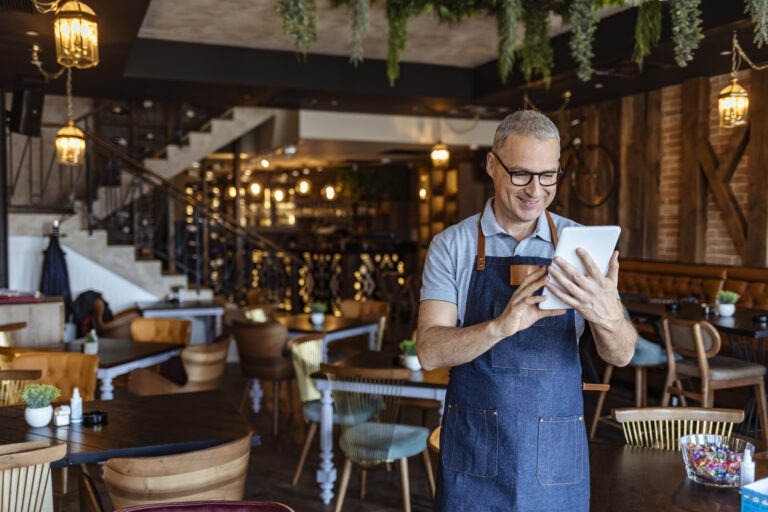23 Restaurant Marketing Ideas to Drive Revenue and Loyalty
Stephanie Schalow
5 min read
Aug 14, 2023

Stephanie Schalow
5 min read
Aug 14, 2023

Effective marketing is crucial to the success of any restaurant. And in today’s competitive world, you need to show up where your guests are if you want to stay top of mind.
While there are countless options when it comes to marketing your restaurant, our data shows that Google, social media and referrals are the top channels consumers use to discover and book restaurants.
We understand building out multiple marketing strategies can sound overwhelming, so we put together a list of some actionable restaurant marketing ideas based on some of the most popular channels and tactics to help you get started.
Monitoring and responding to reviews, both positive and negative, is crucial to a healthy online presence. Sixty percent of diners read reviews before going out for a meal, and more than one-third of customers won’t eat in a restaurant with less than a 4-star rating. More important are your responses to these online reviews — customers notice your communications, and even a slight boost in your rating on Yelp, for example, can increase revenue by 9%.
Vandal, a Sydney-based vegan restaurant, uses SevenRooms’ review aggregator to monitor all of his online reviews — and the owner responds to each one. In just six months, Vandal went from less than 200 reviews to 638 at the time of our interview.
Don’t miss the chance to convert unhappy reviewers into happy ones. Use your responses to convince potential first-time customers that your business takes guest experience seriously. Platforms like SevenRooms make it easy to stay on top of reviews by aggregating Google, Yelp, Facebook, TripAdvisor, and other reviews in a daily email digest.
Studies show that roughly 70% of consumers who are asked to leave a review will do so. Restaurants that consistently deliver exceptional review-worthy service won’t have to worry about the occasional bad review online.
We also know that recency matters for securing reviews, so sending an email soon after you interacted with the customer can ensure a steady stream of positive reviews.
It’s no secret that consumers trust other consumers – in fact, 61% book restaurants based on referrals from family and friends! The more you can include the customer’s voice in your marketing communications — like their social pictures and posts, for example — the better. If a customer tags your restaurant in a picture of their beautiful meal, repost it to show some love.
Make sure you give proper photo credit on the post, and be sure to reach out to them via direct message to thank them personally. This one-to-one form of restaurant marketing can help you build loyalty with your biggest brand advocates.
Most customers who visit your website are looking for your menu, your location, your hours, or how to book a reservation or place an order. Ensure your website is up to date, and make it easy for a customer to take action with prominent links or buttons to your reservation and order pages.
Check out how easy a Japanese Peruvian concept with four locations across the world, Chotto Matte, makes it to book a reservation or place an order for their various locations.

FYI: Most customers browse and book on their phones, so make sure your restaurant menu is optimized for mobile (in PDF and text form). Then add your docs to all your online channels, including your website, social media channels, Google listings and other booking channels.
Pop-ups and slide-ins are a great way to promote special offerings or provide customers with a quicker way to access important information — like your online reservation links or delivery services.
Our research revealed that at least 33% of diners primarily use search engines to find and book restaurants. Optimizing your Google business listing is one of the most impactful marketing moves you can make. Small changes, like updating your hours of operation and making sure your address, phone number and restaurant description are correct, can have a big impact when a guest is searching for you online.
The Reserve with Google feature also lets guests book tables at restaurants without ever leaving Search or Maps. For restaurants, we highly recommend integrating your site with Google. It’s easy to set up and it’s free! Check out our comprehensive guide on how to drive more revenue for your restaurant through Google.
Creating local ads on Google and Facebook can be a grea way to drive orders and reservations. Leverage your existing guest data to create detailed guest profiles of your existing customers that can inform who/where to target your ads for new customers.
You can also use retargeting to advertise to people who have visited your site before. This helps you take advantage of the exposure effect, where consumers are more likely to buy something they see often.

Blog
How to Step Up Your Restaurant’s Social Media Marketing Strategy with Paid Ads
Pro Tip: You can get the most ROI on your local Google and Facebook ads by focusing on organic and local SEO, which involves creating content on your website that uses the keywords you want to rank for. Use a combination of branded search terms (“Restaurant XYZ hours”) and non-branded search terms (Italian food near me) to keep costs down.
Good restaurant marketing is all about driving awareness for your brand. Have an upcoming event, exciting promotion, a soon-to-be-opened restaurant, or a new chef? Share it with local publications and even some of the bigger players – like The Infatuation and Eater. You’d be surprised how much buzz press publications can generate, helping drum up excitement for your latest offering.
When reaching out, always include the following in your pitch:
The easier you make it for the editor to craft a story, the more likely they are to write about your business.
Part of what makes dining out so enjoyable is that a restaurant can transport you to another place, or put you in a certain mood. Brands that can deliver those same feelings through pictures and captions on social media truly deliver the 360-degree experience consumers expect. Is your restaurant quirky, feminine, simplistic or funky? Work the vibe of your restaurant into your social media presence.
People eat with their eyes, so investing in high-quality photography for your food photos and ambiance is worth the money. More drool-worthy pictures on social media, in press pieces, and on your website mean more opportunities to entice hungry customers.
Chillfire Bar & Grill in North Carolina displays stunning professional imagery on every page of its website, including images of both its food and atmosphere.
The restaurant version of the quote “Build it and they will come” would likely be “Make it pretty and they will post.” Design Instagram-worthy plates to encourage social engagement. Extend that experience to your website and on-premise experience by marking particularly gorgeous dishes with a special icon on the menu to indicate their ‘Instaworthiness’.
Anytime a guest posts the dish online, make sure you like or comment on the post. They’ll be thrilled you engaged with their content, and you’ll reap the benefits of their future repeat business. Is anyone else suddenly craving a Black Tap milkshake? This restaurant’s Instagram is certifiably drool-worthy.
We’ve said it before, social media is the new restaurant critic. By working with influencers with a following that aligns with your target audience, you can attract new diners who commonly make decisions based on others’ recommendations. Decide whether you want to work with a micro-influencer, food blogger or another type of personality. Then, leverage their audience to promote a signature dish, upcoming event or grand opening.

Blog
Food for Fame: A Guide to Working With Restaurant Influencers
Remove as much friction as possible for customers who search for you online — especially your Reserve Now and Order Now buttons. These call-to-actions should be available on every online listing possible: Google, Yelp, Facebook, Instagram, TikTok, and TripAdvisor, as well as your direct reservation and direct online ordering solutions.

Email addresses are gold for restaurant marketing purposes. Starting a loyalty program is a simple way to collect addresses for your email list and run targeted marketing campaigns, while also rewarding your most loyal customers with special offers or access. Don’t forget to promote your program – in check inserts, via website pop-ups, in email newsletters, and on social media! The more places you can promote your business and its rewards for repeat visitors, the more success the program will have.
Automating your email marketing can be your restaurant’s secret weapon for driving big results! For example, set up targeted, timely email campaigns according to your customer segments, such as first-time orderers, positive reviewers, big spenders, wine lovers, and more.
Pro Tip: After strategically segmenting their client database, the Mina Group used SevenRooms’ pre-built library of marketing emails to follow up with every guest with hyper-targeted marketing campaigns. The results? An additional $428,000 of on- and off-premise revenue in 2021.
Good marketing is all about engaging the right people at the right time. A combination of automated restaurant email marketing campaigns and individual emails can help you stay top of mind for customers.
Raining today? A quick email promoting your delivery options can help replace a potential decrease in on-premise customers with off-premise orders.
Our comprehensive email marketing guide for restaurants can help you build a restaurant email marketing program that elevates the guest experience, generates loyalty and earns repeat business.

Playbooks & Guides
The Ultimate Email Marketing Guide for Restaurants
The hospitality industry is all about community. So, building connections with other local businesses and restaurant owners is always a good idea. We often see breweries partnering with local food trucks or nearby restaurants to offer food to their patrons. Is your venue located near a great winery? Work together on a creative campaign you can use to cross-promote each other.
You never want to miss an opportunity to catch passersby’s eyes. Utilize prominent signage wherever you can outside of your venue, including windows and sidewalks.
Don’t have a good place to put signage? Consider posting around your neighborhood, or tapping into local businesses to share details on your restaurant with their customers. You can return the favor by including information about their businesses at your venue as well.
Scarcity marketing is one of the most effective ways to drive immediate revenue because you capitalize on consumer “FOMO” (fear of missing out). When you offer something that is for a “Limited Time Only” or in a “Limited Quantity,” it prompts immediate action.
You can also use scarcity marketing by owning a day of the week, like Fleming’s uses with Tomahawk Twosday. If you want a special three-course menu for two, you have to book your reservation or place your online order on a Tuesday. Other examples are specials for Meatless Monday, Wine Wednesday, or Sushi Saturday.
Small additions to on-premise or off-premise orders can help elevate the experience you deliver to customers through “surprise and delight” moments. Consider cards with a QR code to themed Spotify playlists for Valentine’s Day, free desserts on weekdays or shoulder times, or a complimentary cocktail on a first-time order. With so many dining options for customers to choose from, creating a memorable moment will drive long-term loyalty.
There are endless restaurant marketing ideas to implement at your restaurant today. Choose one, or several of the above and get started. You’ll reap the benefits of additional revenue and long-term loyalty with customers.
Including a postcard as a check insert or in each takeout bag is a great way to grab attention. You can use these cards to promote a variety of programs and promotions. Here are a few examples:
Holidays are great opportunities to drive orders and reservations for your restaurant. Whether it’s a major national holiday like Easter or Christmas or a ‘food holiday’ like National Pizza Day or National Margarita Day, you have endless opportunities to leverage restaurant marketing to drive online orders and reservations.
Check out our blog post for a list of national food holidays, and creative ways to drive revenue for them. We also created an Australian Marketing Calendar and a UK Marketing Calendar to help you capitalize on popular revenue-generating holidays.
Third-party marketplaces are a great way for new customers to discover your restaurant when scrolling through an app. Use these channels to your advantage by making some reservation inventory available on third-party booking platforms, or by offering delivery on a third-party ordering platform. Just be sure to have a strategy in place to convert those third-party orders or reservations into direct customers so you can save on commission fees and build direct relationships with your customers. A bag insert with a discount for ordering direct is a quick, easy way to make that conversion.
Interested in learning more about how SevenRooms’ automated marketing and email solutions can help you achieve your marketing goals? Request a demo today.